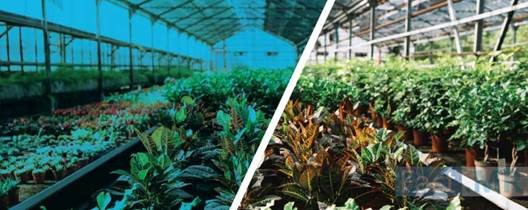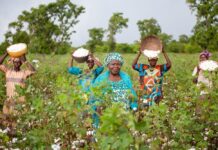According to a study done by market research and competitive intelligence firm Fact.MR, the worldwide indoor farming market is expected to develop at a compound annual growth rate (CAGR) of 11.3% from 2023 to 2033. At present, the market value is $40.51 billion USD.
The global indoor farming sector is booming as a result of efforts to mitigate the effects of climate change, boost year-round productivity, and satisfy the growing demand for sustainable agriculture solutions. Indoor farming is a novel solution to conventional agricultural problems that offers an economical, space-efficient, and environmentally sustainable way to grow food. The primary forces behind market expansion are environmental sustainability and year-round production. Compared to traditional agriculture, indoor farming requires a significantly smaller quantity of land and water.
Key Segments of Indoor Farming Industry Research Report
- By Facility Type: Glass or Poly Greenhouses, Indoor Vertical Farms, Container Farms, Others
- By Growing System: Aeroponics, Hydroponics, Aquaponics, Soil-based, Hybrid
- By Component: Hardware, Software
- By Crop Type: Fruits & Vegetables, Flowers & Ornamentals, Herbs & Microgreens, Others
- By Region: North America, Europe, Latin America, East Asia, South Asia & Oceania, Middle East & Africa
Urbanization’s growth has spurred the use of indoor farming techniques, giving city people access to locally grown, fresh produce. Growing the boundaries of what can be grown indoors and reducing reliance on soil are the practises of hydroponics, vertical farming, and controlled environment agriculture. The necessity of robust local food systems has been brought to light by the COVID-19 pandemic, which makes indoor farming an enticing possibility for food security.
As consumers grow more conscious of the environmental effects of food production, they are searching for locally sourced and sustainable alternatives. Indoor farming satisfies these needs. The productivity of crops and operational efficiency have significantly risen with the integration of IoT, AI, and current LED lighting.
Key Takeaways from Market Study
- The global indoor farming market is projected to expand at a CAGR of 11.3% through 2033.
- Asia Pacific accounted for 32.1% share of the global market in 2022.
- The software segment is forecasted to expand at a CAGR of 14.3% from 2023 to 2033.
- Demand for indoor farming solutions is projected to reach a market value of US$ 118.17 billion by the end of 2033.
- The flowers and ornamentals segment accounted for a market share of 28.9% in 2022.
- The hydroponics segment accounted for 49.9% share of the market in 2022 and is projected to rise at a CAGR of 6.5% over the next ten years.
- The hardware segment is set to advance at a CAGR of 7.6% through the forecast period (2023 to 2033).
- The glass or poly greenhouses segment held 49.2% market share in 2022 and is projected to expand at 6.5% CAGR through 2033.
- North America accounted for 24.8% of the global market share in 2022.
“Indoor farming necessitates a deeper understanding of food production. The indoor farming market is rapidly transforming the landscape of agriculture. With a strong emphasis on sustainability, year-round production, urban accessibility, and cutting-edge technology, it is positioned to address key global challenges, including food security, resource efficiency, and environmental sustainability. As the market continues to expand and innovate, it promises to play a central role in shaping the future of agriculture, providing fresh and sustainable food solutions to an ever-growing global population,” says a Fact.MR analyst.
Need for Crop Diversification and Maximization of Resource Efficiency
Seasonal variations, unexpected weather patterns, and severe climatic conditions frequently interrupt harvests in traditional outdoor agriculture. Indoor farming provides a creative solution to this dilemma by offering regulated environments in which crops can flourish year-round, regardless of external conditions.
Stable year-round output ensures a consistent and continuous supply of fresh, locally grown vegetables, reducing reliance on changing seasons and the need to import food from distant locations. This not only solves concerns about food security but also minimizes the carbon footprint associated with long-distance shipping.
Indoor farms can change environmental elements such as temperature, humidity, and light to meet the needs of a wide variety of crops. This adaptability enables the production of seasonal crops outside of their regular seasons. It also allows growers to experiment with exotic or high-value crops that may not be feasible in their local climate, thus broadening the offerings of the market and economic possibilities. Indoor farms are consistent with the larger drive to reduce food waste, as they eliminate the need to dump unsold or rotten produce due to their limited shelf life.
More Valuable Insights on Offer
Fact.MR, in its new offering, presents an unbiased analysis of the indoor farming market for 2018 to 2022 and forecast statistics for 2023 to 2033.
The study divulges essential insights into the market based on facility type (glass or poly greenhouses, indoor vertical farms, container farms, others), growing system (aeroponics, hydroponics, aquaponics, soil-based, hybrid), component (hardware, software), and crop type (fruits & vegetables, herbs & microgreens, flowers & ornamentals, others), across six major regions of the world (North America, Latin America, Europe, East Asia, South Asia & Oceania, and MEA).
These insights are based on a report on Indoor Farming Market by Fact.MR.








